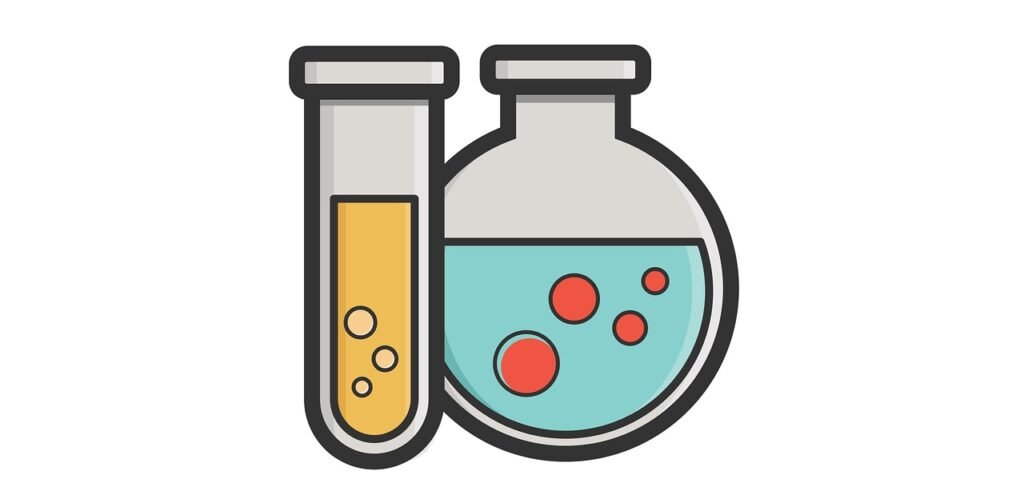
Introduction
In the maze of our daily lives, where routines and responsibilities are intertwined, the silent presence of safe storage household chemicals often escapes our conscious notice. However, inside the seemingly harmless bottles under our sinks or in our cabinets lies a world of potential dangers and environmental impacts. This section aims to capture your attention with a vivid exploration of the unnoticed dangers inside our homes and illustrate the critical importance of adopting safe chemical handling practices.
A. Invisible dangers lurk in everyday products
Picture this: sparkling clean after a thorough house cleaning session. But beneath the polished surfaces and sterile spaces, there are still chemical residues. Products designed to improve our lives may contain hidden dangers. From volatile organic compounds (VOCs) to corrosives, the invisible threats found in our everyday products require a conscientious approach to them.
B. The silent footprint: understanding household chemicals
To embark on the journey towards an eco-safe home, it is essential to understand the nature of the chemicals we invite into our living spaces. Key ingredients in many household items, such as cleaning supplies, paints, and pesticides, may pose risks if not handled with care. This section unveils these silent actors, detailing common household chemicals and the potential dangers they bring.
C. The relationship between safe practices and environmental responsibility
And beyond the confines of our homes, the repercussions of unsafe chemical practices extend to the environment we share. Careless handling and disposal of household chemicals contributes to pollution, putting ecosystems and water sources at risk. The shift towards safe chemical practices becomes not just a matter of personal safety but a collective responsibility for the well-being of our planet.
D. The importance of the safe handling of chemicals at home
In the complex dance of domestic life, where household chores and family life intermingle, the importance of safe handling of chemicals often overshadows. However, the repercussions of neglect can reverberate across generations. This subsection highlights the critical importance of integrating safe chemical handling into the fabric of our daily lives.
E. Protect your home and your loved ones
The home, a haven of comfort and safety, can become a potential danger zone if chemicals are not managed carefully. By adopting safe handling practices, you are not only protecting your living space from accidents, but you are also protecting the well-being of your loved ones. Creating a safe environment starts with recognizing potential risks and taking proactive measures.
F. Nurturing a sustainable future through individual choices
As stewards of our families, our choices extend beyond the walls of our homes. Safe handling of chemicals is not just a personal commitment; it is a transformative step towards sustainability. By adopting eco-friendly practices in our homes, we are contributing to a collective movement calling for a greener, healthier future. Every responsible action becomes a building block for a more sustainable world.
G. Transitioning from ignorance to empowerment
The journey to safe handling of chemicals begins with awareness. This section highlights the path from unawareness to empowerment, emphasizing that informed choices can turn things around. Through this blog post, you will gain the knowledge and tools to navigate the world of household chemicals, empowering you to make informed decisions that align with your commitment to a safe, green home.
Table of Contents
I. Understanding Household Chemicals
IV. Instructions for safe handling
I. Understanding household chemicals
In our daily routine, common household chemicals silently coexist, providing convenience but masking potential dangers. Let’s delve into the domestic sphere to learn about these materials and uncover the dangers they may pose.
A. Common household chemicals: revealing their everyday culprits
From bleach to ammonia, everyday products contain a range of chemicals. Identifying these culprits is the first step towards responsible management.
When transitioning seamlessly from the kitchen to the laundry room, items like dishwashing detergent and laundry bleach contain corrosive ingredients. In bathrooms, disinfectants and toilet bowl cleaners often mask hazardous substances.
In the world of DIY projects, paints, adhesives, and solvents use strong chemicals. Even seemingly harmless air fresheners may release volatile organic compounds (VOCs).
B. Uncovering potential risks: a closer look
Inside these seemingly harmless bottles lurk potential dangers. Corrosive chemicals can cause skin burns, while inhaling volatile organic compounds can lead to respiratory problems.
Household cleaners may contain allergens that cause adverse reactions. Mixing incompatible products can cause chemical reactions, resulting in the release of toxic fumes. Understanding these risks is vital for safe handling of chemicals at home.
Moving to eco-friendly alternatives helps mitigate risks, ensuring a healthier home environment for you and your loved ones.

II. Environment Impact
Revealing the repercussions of improper disposal methods and exploring eco-friendly alternatives for a sustainable tomorrow
A. Consequences of improper disposal
Neglecting proper disposal channels allows hazardous household chemicals to seep into ecosystems, threatening biodiversity. Runoff from improper disposal pollutes water sources, endangering aquatic life and harming overall environmental health.
Chemicals improperly disposed of in landfills contribute to soil pollution, affecting plants and animals. The cumulative effect accelerates environmental degradation. Understanding the consequences underscores the urgent need to adopt responsible disposal practices.
B. Eco-friendly alternatives
Embark on a journey towards a greener future by embracing eco-friendly alternatives. Choose cleaning products that are biodegradable, which reduces your environmental footprint. Explore e-waste recycling options, reducing the environmental impact of discarded gadgets.
Moving to sustainable packaging materials reduces the burden on landfills. Supporting local hazardous waste disposal programs ensures responsible management of chemicals. By incorporating these eco-friendly alternatives, we are collectively contributing to creating a healthier and more sustainable planet.
III. Safe Storage practices
Implementing safe storage practices is pivotal to mitigate risks. Dive into the nuances of container selection, labeling, and strategic storage locations.

A. Proper containers and labels
Moving from risk to resilience starts with choosing the right containers. Choose strong, leak-proof options. Use labels to clearly indicate the contents, ensuring easy identification and safe retrieval.
B. Storage locations and tips
Navigate the maze of secure storage by identifying specific areas. Keep chemicals away from heat sources and direct sunlight. Store in well-ventilated areas to reduce the risk of smoke buildup.
Regulate chemicals strategically based on compatibility to avoid potential interactions. Prioritize emergency access while maintaining a safe environment. By adhering to these storage practices, you fortify your home against unexpected dangers.
IV. Instructions for safe handling
Navigate the world of safe handling with insights on personal protective equipment, ventilation, and wise use.
A. Personal Protective Equipment (PPE)
Personal Protective Equipment (PPE)
Equip yourself with personal protective equipment, including gloves and goggles, which create a barrier against potential skin and eye contact.

B. Ventilation and safe use
Prioritize well-ventilated spaces to disperse fumes and ensure safe use of chemicals. Follow the recommended directions for dosage and application. These guidelines promote a safe environment while promoting effective and responsible handling of chemicals.
V. Disposal techniques
Tackle the complexities of proper disposal with insights into local regulations, available resources, and eco-friendly disposal alternatives.
A. Local regulations and resources
Comply with local regulations governing the disposal of chemicals. Utilize community resources for designated disposal sites and programs.
B. Eco-friendly disposal options
Transition to eco-friendly practices by exploring recycling programs, hazardous waste disposal facilities, and sustainable disposal methods. Adherence to these disposal techniques ensures a responsible and eco-friendly approach, contributing to maintaining a cleaner planet.
VI. eco-friendly alternatives
Embark on a green journey with homemade cleaning solutions and sustainable brands, reducing your environmental impact.
A. Homemade cleaning solutions
Make eco-friendly cleaners from household items like vinegar and baking soda, reducing reliance on chemical-laden products.
B. Sustainable brands
Explore a world of sustainable brands committed to eco-friendly formulations. Give priority to products with biodegradable packaging, in line with the principles of green living. By adopting these alternatives, you are contributing to a healthier home and a sustainable planet.
VII. Children’s education
Promoting a culture of safety and environmental responsibility by transferring knowledge and teaching safe practices to the younger generation
A. Teaching safe practices
Instill the importance of proper handling of chemicals, emphasize precautions, and promote responsible habits from an early age.
B. The importance of environmental responsibility
Educating children about their role as stewards of the environment and instilling a sense of responsibility towards sustainable living practices. This approach lays the foundation for a future generation committed to eco-friendly choices, ensuring a safer and greener world.
VIII. Emergency Preparedness
Make sure you are prepared by incorporating first-aid tips and keeping essential emergency contact information on hand.
A. First-aid tips
Learn basic first-aid procedures when exposed to chemicals. Prompt action minimizes potential damage and promotes rapid recovery.
B. Emergency contact information
Compile a comprehensive list of emergency contacts, including local poison control facilities and medical facilities. Easily accessing this information is essential for rapid response and effective management of emergency situations. Stay prepared and stay safe.
IX. Conclusion
Synthesize the knowledge gained and emphasize the paramount importance of safe management of chemicals in daily life.
A. The main ideas
By embarking on a beneficial journey, we have formed a comprehensive approach to managing household chemicals. From focusing on the importance of safe storage to identifying potential dangers in common household chemicals, our exploration ensures an informed and safe living environment. Understanding the consequences of improper waste disposal promotes environmental responsibility, prompting a shift to eco-friendly alternatives. Instilling safe practices in the younger generation cultivates a culture of responsibility for safer homes today and tomorrow. Equipping yourself with first aid tips and emergency contacts establishes preparedness for unexpected situations. Embracing eco-friendly alternatives, supporting sustainable brands, and using responsible disposal methods become pledges to a greener, healthier future. This summary promotes the transformative journey from awareness to action, strengthening the commitment to safe and eco-friendly chemical management in every home.
B. The resounding importance
Let us emphasize the utmost importance of safe management of chemicals, as it is essential to protecting homes, maintaining health, and caring for the environment. As we reiterate the importance of these practices, we strengthen the foundations of safe living spaces, ensuring the well-being of individuals and the sustainability of our shared world. Every conscious choice in dealing with chemicals resonates as a commitment to a safer, healthier, and more eco-conscious future.
C. Pledge to sustainability
In the spirit of promoting a greener future, let’s pledge to adopt sustainable practices. Your commitment matters, whether it’s adopting eco-friendly alternatives, supporting sustainable brands, or adhering to responsible disposal methods. Each pledge contributes to a collective effort for a safer, healthier, and more sustainable world. Together, our actions shape the future we all envision – a future in harmony with the environment and the well-being of future generations..
X. Call to action
Empower your green journey by taking actionable steps today. Implement safe chemical practices, explore eco-friendly alternatives, and share this guide with your community. Let us work together to promote a culture of responsibility and sustainability, and create a safer and greener future for all. Your actions matter – make them count.
Additionally, to stay updated on the latest sustainability tips, case studies, and expert advice, we encourage you to subscribe to Eco-Safe Home‘s newsletter. By joining our community, you’ll receive valuable insights directly in your inbox, empowering you to make your home more eco-friendly and sustainable.
XI. FAQs
- Why is proper storage of household chemicals essential?
Proper storage prevents accidents, protects your home, and reduces the risk of chemical exposure, ensuring a safe living environment for you and your loved ones. - How can I identify the potential hazards of common household chemicals?
Understanding the labels and formulations of household chemicals is crucial. Look for information on Safety Data Sheets (SDS) and educate yourself about the risks associated with each product. - Are there specific guidelines for storing chemicals in homes where there are children?
Yes, it is necessary to store chemicals out of reach, preferably in locked cabinets. Educate children about the dangers of household chemicals and establish strict safety practices. - What should I do if I accidentally mix household chemicals?
Avoid mixing chemicals, as they may lead to dangerous reactions. In case of accidental contact, ventilate the area, evacuate if necessary, and seek professional advice immediately. - How can I dispose of household chemicals responsibly?
Research local regulations for chemical disposal, use community resources, and consider eco-friendly alternatives. Many municipalities have designated drop-off points and recycling programs for safe and responsible disposal.